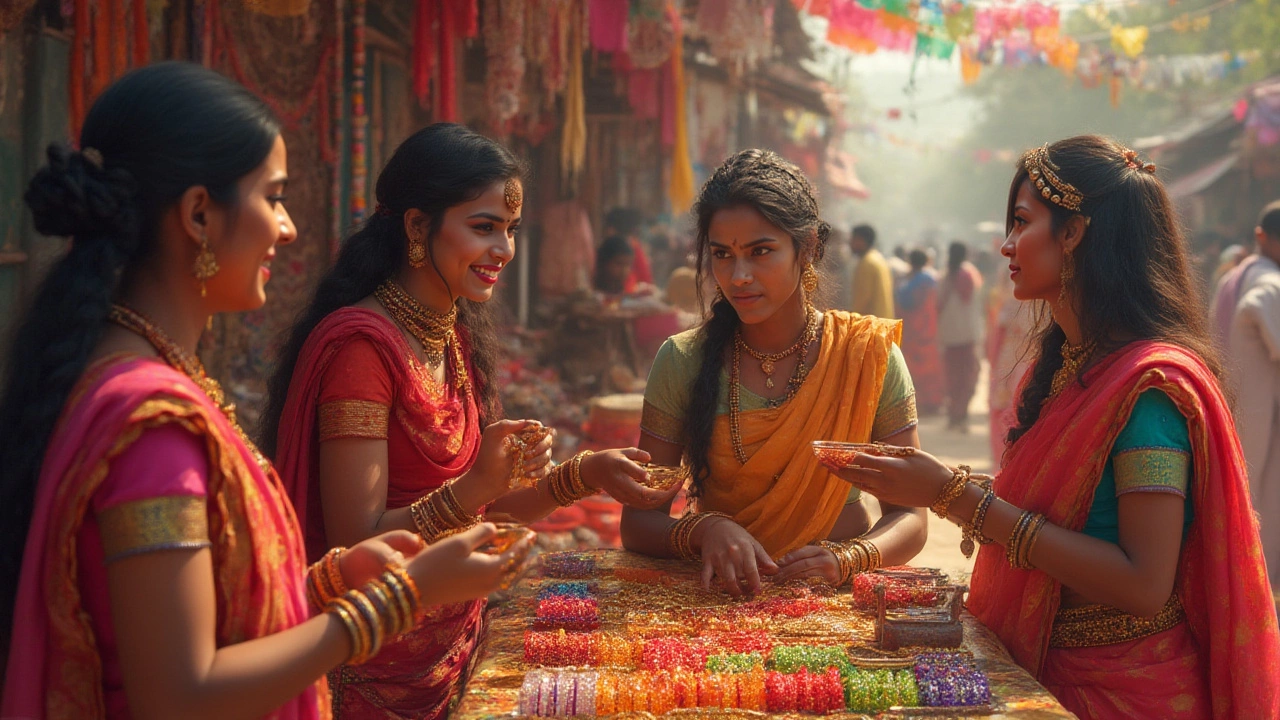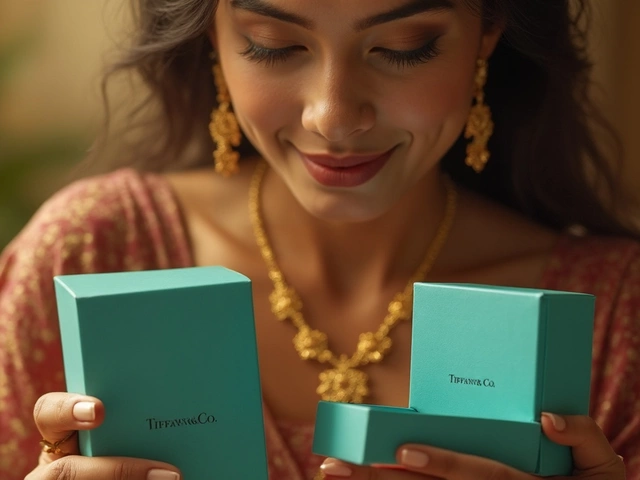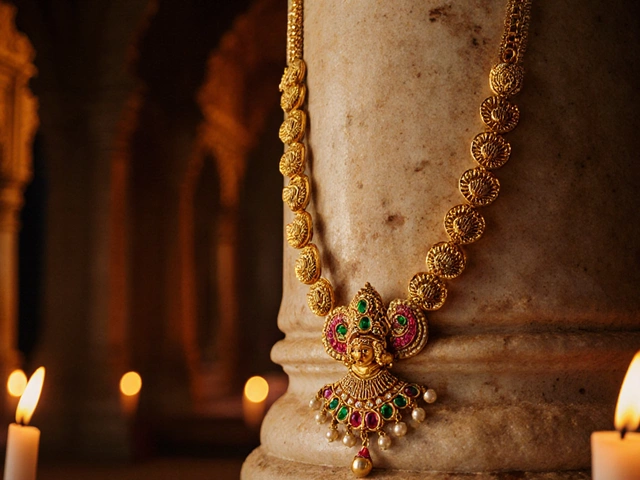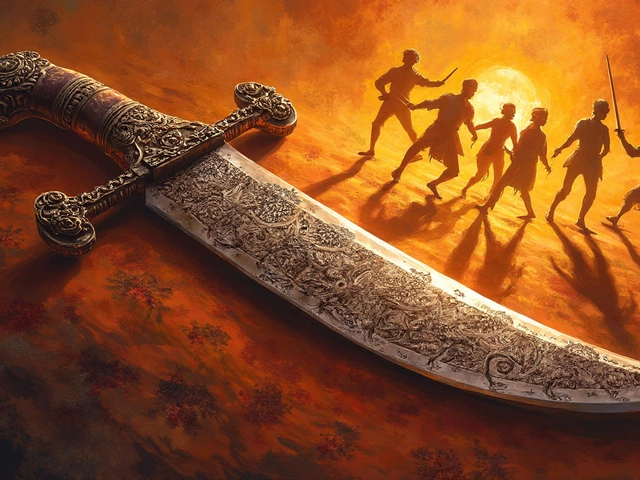Bangles aren’t just accessories—they’re dripping with stories, beliefs, and maybe a fair share of gossip. If you’ve ever walked into a jewelry shop in Mumbai or scrolled through Instagram reels about Indian traditions, you’ll know bangles show up everywhere. But here’s the spicy bit: to some aunties and family elders, a stack of bangles on an unmarried woman might raise eyebrows. Yet, every day, millions of unmarried women wear them, style them, and make them their own. So, what’s the real deal?
The Origin Of Bangles in Indian Tradition
Bangles go way back, and I mean way, way back. Archaeologists dug up bangles from Mohenjo-daro—a city that existed over 4,500 years ago. They found shell bangles on the arms of a famous figurine, the "Dancing Girl". Clearly, bangles have been around longer than ghee in Indian kitchens. Long before marriage customs started dictating rules, bangles were just ornaments, loved for their sound, their feel, and their color. Women wore bangles regardless of marital status just as men wore jewelry too—think of all those ancient kings posing with chunky armlets.
As time rolled on, communities layered new meanings onto bangles. In many Indian cultures, the clinking of glass bangles meant a home with happiness, laughter, and, oddly enough, "good luck". Bangles came to be a symbol for married women especially in the north—red and green glass bangles in Punjab, ivory and red in Bengal, or green in Maharashtra. But these customs didn’t exist everywhere. In southern India, for example, girls start wearing bangles as toddlers at the bangle ceremony called valaikaapu—a tradition specifically for expecting mothers but also for young girls to ward off evil.
So here’s an interesting twist: the rules about who should wear bangles are a lot younger than bangles themselves. The whole “unmarried women shouldn’t wear bangles” story is less of a pan-India rule and more of a cultural patchwork.
Myths Around Bangles and Marital Status
Just stroll through a local Mumbai market, and you’ll hear at least one aunty loudly remarking about a girl’s bangles and her marital status. The idea that bangles are only for married women is stronger in some states than others. For example, in Punjab and Bengal, a married woman’s identity is tied up with certain types of bangles—chooda in Punjab, shakha-pola in Bengal. But walk into a college in Delhi or Mumbai, and you’ll see unmarried girls mixing glass bangles with ripped jeans, without a second thought.
Let’s smash a myth here: nowhere in any religious scripture does it say that unmarried women cannot wear bangles. The rules we see today sprang from social practices, not some divine decree. Yes, certain rituals, like in Telugu or Gujarati weddings, give bangles specific meanings—like fertility, prosperity, or a happy married life—but that doesn’t mean unmarried women can’t or shouldn’t enjoy them.
Some people believe that wearing red or green bangles before marriage could bring bad luck, or that it’s "reserved" for a married life, but there’s no logical or scriptural backbone to these ideas. If you ask young women in metros today, most will laugh off these superstitions. What matters a lot more to them is comfort, personal expression, and sometimes just matching the color to their kurta.
There’s a trend now where girls wear plastic bangles, funky oxidized pieces, or silver kadas—none of these carry any marital tag. Bollywood has glamorized bangles for decades: think Madhuri Dixit twirling in "Choli Ke Peeche" or Deepika Padukone’s dazzling arms in Sanjay Leela Bhansali movies—unmarried, married, doesn’t matter.
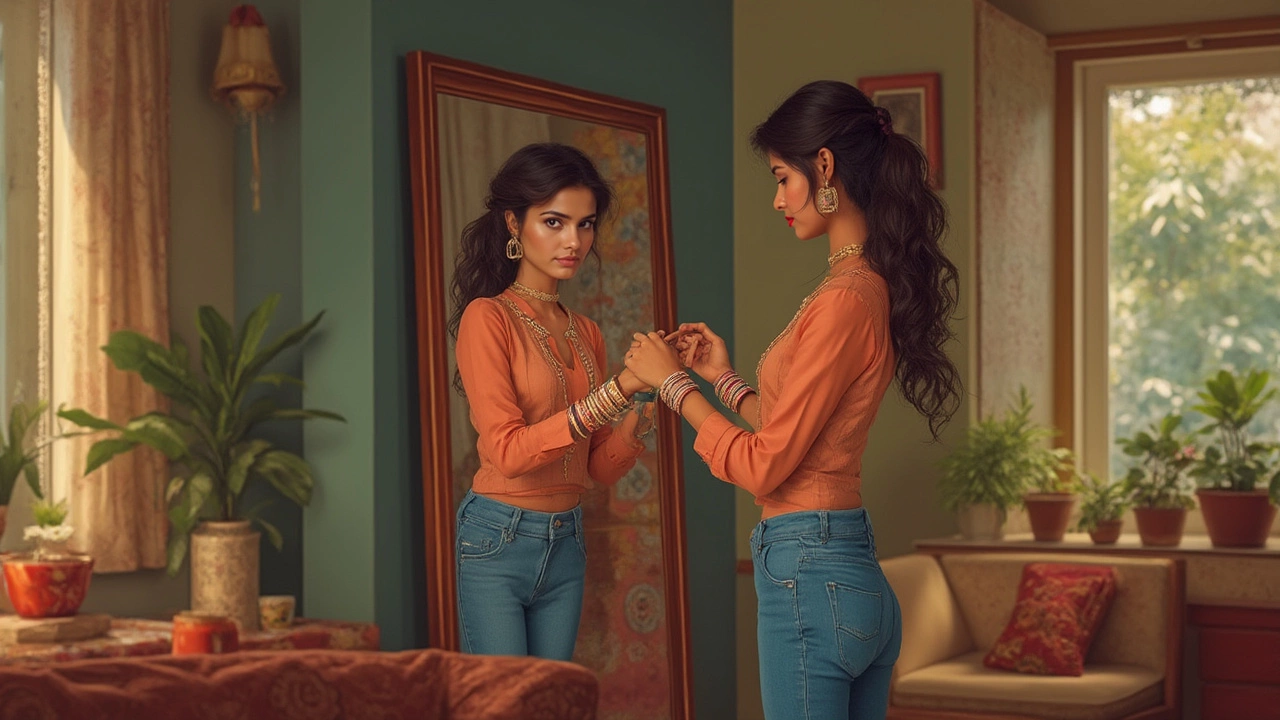
Bangles in Everyday Life: Breaking Old Rules
There’s a practical side too. Let’s face it, bangles are cheap, fun, and instantly level up any outfit. No wonder so many of us (married or not) make a quick trip to the bangle vendor before Diwali, Eid, or even a college fest. In many Indian schools, girls wear bangles, especially during ethnic days or school functions—no one is keeping a notebook on their wedding status.
Lots of people believe cultural customs are rigid, but fashion is a living, breathing thing. Today, unmarried women wear bangles for poojas, parties, or just a bit of self-expression. It’s pretty standard to spot working women at the bus stop, students at TISS, and Instagram influencers at Kala Ghoda, all rocking bangles in their signature style. There’s even a resurgence of handloom and artisan-made bangles—some with modern designs, others echoing ancient motifs.
Here’s a fun stat: according to India’s All India Gem and Jewellery Domestic Council, the market for glass and metal bangles in urban areas (like Mumbai, Pune, and Bangalore) is driven 63% by women under the age of 30. Most of these buyers are single or students. Looks like the old “married-only” logic is just not holding up.
For parents who fuss about “what will people think?”, there’s a middle ground. Some families let girls wear bangles but maybe avoid traditional marriage colors (like red or ivory) during particular festivals or weddings. Fair enough, if everyone’s happy. But at the end of the day, fashion should be fun, not a chore.
| Bangle Type | Common Material | Associated Customs | Popular Among |
|---|---|---|---|
| Glass | Glass | Symbolizes luck and safety; often worn at weddings | All ages, urban & rural |
| Metal (Oxidized, Silver) | Metal alloys, Silver | No direct marital link; popular at festivals | Young and middle-aged women |
| Lac | Lacquer | Traditional, festive, especially in Rajasthan | Unmarried and married women |
| Chooda | Ivory, Plastic | Punabi wedding tradition (bride only) | Newly married women |
| Shakha-Pola | Conch shell, Red coral | Bengali married women only | Married women (Bengal) |
Busting Social Taboos: Stories and Shifts
If you still feel a little awkward about donning bangles before marriage, consider this: culture itself shifts with time. Twenty years ago, people frowned at jeans in college; today, jeans and bangles are a fashion combo worthy of magazine covers. Even in smaller cities like Nagpur or Indore, unmarried women set trends with multi-colored bangles.
Some schools in South India celebrate “Bangle Day” for all girls, totally ignoring any marital tags. When companies run women’s day events, they include bangle making or wearing challenges. Even among elders, attitudes are relaxing—not long ago my friend’s grandma, a staunch traditionalist, started gifting glass bangles to her granddaughters “for good luck”, married or not. That shift comes partly from pop culture and partly from practicality—bangles are inexpensive, easier than gold or diamond jewelry, and fit every size.
If you’re after a truly unique look, loads of designers—like Suhani Pittie in Hyderabad or Amrapali from Jaipur—make contemporary bangles with no reference to marital status. These pieces end up in art galleries, on fashion runways, and of course, all over socials. Young influencers and actors (think Ananya Panday, Sara Ali Khan) have regularly posted their bangle stacks, mixing old with new, without worrying about old rules.
Actually, the only place where marital symbols are enforced strictly is among some older conservative groups—mostly rural, or sometimes very traditional families. Most urban or semi-urban circles treat bangles as “just jewelry”. So unless you’re actually participating in a wedding ritual meant for married women, there’s no social crime in picking up a bangle stack from Bandra market or the local fair.
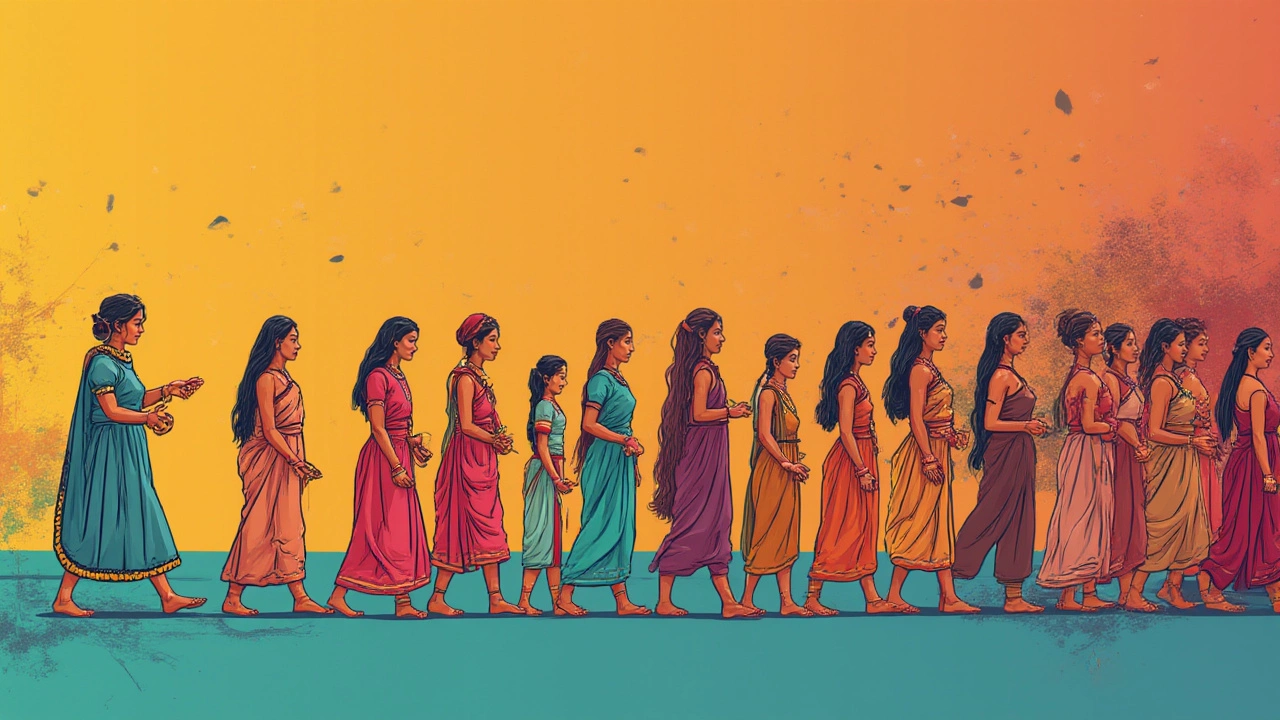
How To Choose and Style Bangles As An Unmarried Woman
Let’s talk how-to. If you’re single and want to wear bangles, there’s zero need to tiptoe around the jewelry section. But you probably want to make your picks practical and stylish.
- Experiment with color: Don’t just stick to reds or greens if you feel they’re too traditional. Try blues, blacks, silvers, or pastels for a twist that feels more "you".
- Mix it up: Pair thin metal bangles with a chunky kada, or glass with oxidized silver. Layer different widths for a boho look.
- Comfort comes first: Avoid heavy stacks if you use your hands a lot or travel by train daily—glass can chip easily. Rubber-coated metal or plastic are lightweight and nearly unbreakable.
- Customize for occasions: For festivals, try glitzy stones or pearls. For everyday, plain metal or simple glass is fuss-free.
- Don’t overthink tradition: Outside of very specific family events (like a cousin’s wedding where certain colors are for the bride), nobody remembers who wore what bangles. Go with what feels good.
- Support local artists: India has thousands of bangle-makers—buy directly from craftspeople for unique, hand-finished pieces.
- Gift ideas: Bangles in a cute case make a brilliant gift for birthdays, regardless of marital status.
Pro-tip: While some believe wearing broken bangles brings bad vibes, that’s just a safety thing. Broken glass can cut—so yeah, swap out damaged pieces, but not because of superstitions.
If you have sensitive skin, avoid alloys with nickel, or try fabric bangles—they won’t itch, and they stay cool in Mumbai heat.
Bottom line? Wear bangles as an unmarried woman, or don’t—totally your call. No tradition, old auntie, or Instagram comment should decide for you. Go with what makes you feel right.
